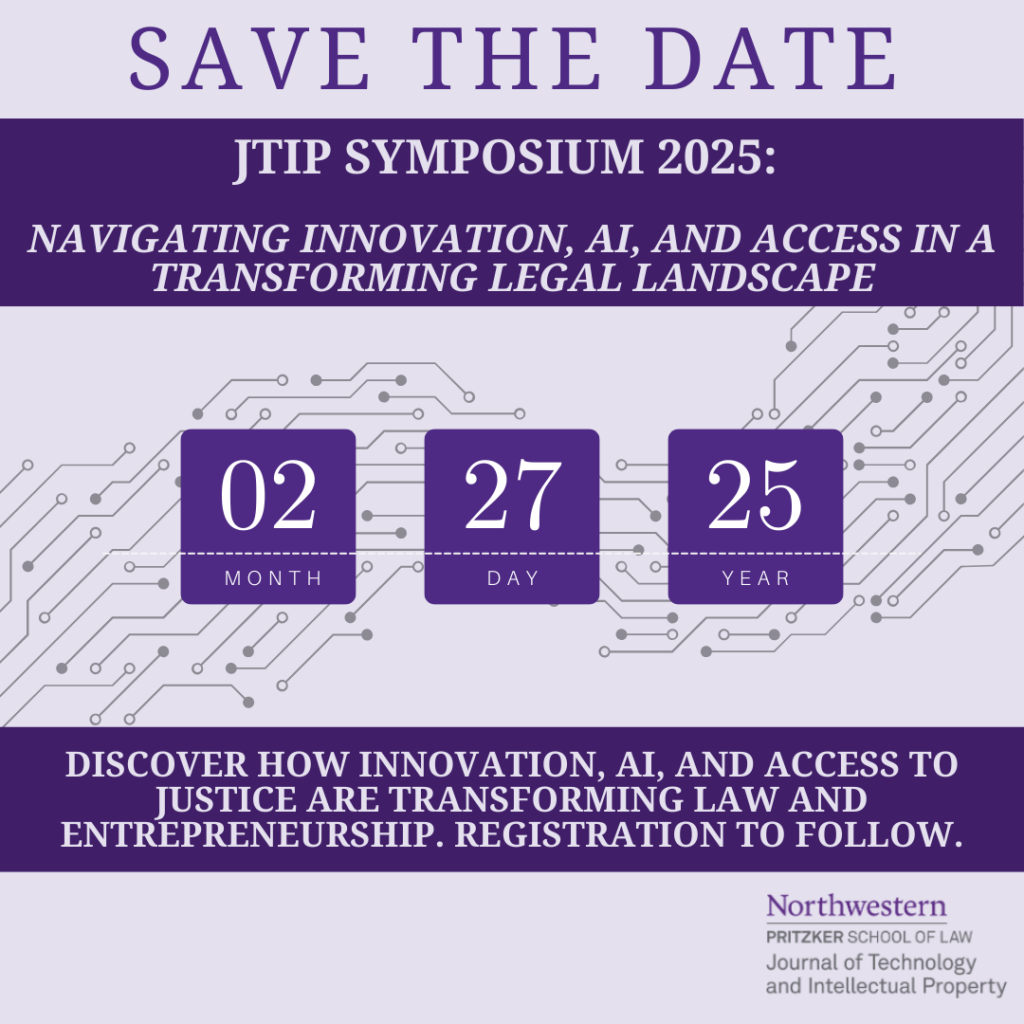JTIP Symposium 2025

🚨 Save the Date! 🚨
Join us for the JTIP Symposium 2025 on Thursday, February 27, 2025, at Northwestern Pritzker School of Law! 🎤⚖️💡
This year’s symposium will bring together thought leaders, innovators, and legal experts to explore the evolving landscape of AI, access to justice, and venture capital. Discussions will cover:
- AI in Legal Services: Current solutions, emerging innovations, and regulatory considerations
- AI & Innovation: How artificial intelligence is shaping law, business, and society
- Bridging the Justice Gap: How technology is transforming access to legal services
- From Founder to VC: Lessons from an entrepreneur-turned-investor
📍 In-Person & Virtual Option Available | 🥂 Lunch Included + Networking Reception
Stay tuned for registration details—you won’t want to miss this! #JTIPSymposium #LegalTech #AI #AccessToJustice #VentureCapital #NorthwesternLaw
